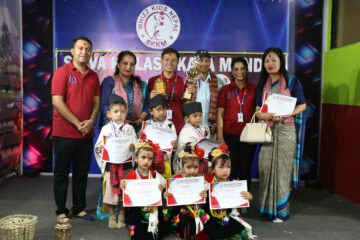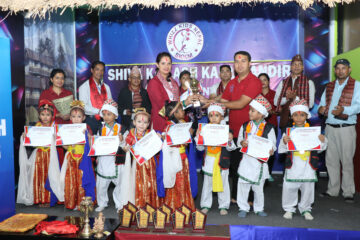Introduction:
Nepal, a land nestled in the lap of the Himalayas, is renowned for its breathtaking natural beauty. However, beyond its majestic landscapes, Nepal boasts a cultural extravaganza that is equally captivating. In this blog post, we embark on a journey to explore Nepal’s cultural richness, delving into its vibrant traditions, ancient art forms, and spiritual heritage. Join us as we unveil the cultural tapestry that makes Nepal a truly remarkable destination.
Diverse Ethnic Groups:
Nepal is a melting pot of diverse ethnic groups, each with its unique customs, traditions, and languages. From the Newars of the Kathmandu Valley to the Sherpas of the Everest region, the ethnic mosaic of Nepal showcases a rich tapestry of cultures. Exploring these communities allows visitors to witness the distinct rituals, music, dances, and cuisines that have been passed down through generations. It is a chance to immerse oneself in the authenticity and diversity that defines Nepal’s cultural landscape.
Ancient Temples and Sacred Sites:
Nepal is home to an array of ancient temples and sacred sites, testaments to the nation’s spiritual heritage. The UNESCO World Heritage Sites of Kathmandu Durbar Square, Bhaktapur Durbar Square, and Patan Durbar Square are architectural marvels that showcase the artistic finesse of Nepal’s ancient civilizations. The sacred temple complexes of Muktinath, Manakamana, and Janaki Mandir attract devotees and spiritual seekers from around the world. These sacred sites not only exude a sense of tranquility but also offer glimpses into the religious devotion that is deeply ingrained in Nepalese society.
Traditional Art and Crafts:
Nepal’s rich artistic heritage is evident in its traditional art and crafts. Thangka paintings, intricately carved woodwork, metal statues, pottery, and handwoven textiles are just a few examples of Nepal’s artistic prowess. The artisans, often belonging to specific artisan communities, meticulously create these masterpieces using age-old techniques. Exploring the workshops and interacting with these skilled craftsmen provides a glimpse into the dedication and creativity that go into preserving these art forms.
Living Cultural Traditions:
Nepal is a treasure trove of living cultural traditions that continue to thrive in contemporary times. The Newari community’s vibrant festivals, such as the Bisket Jatra and Indra Jatra, showcase their unique cultural practices and rituals. The Magar community’s colorful Maruni dance, performed during special occasions, captivates audiences with its rhythmic movements and vibrant costumes. These living traditions are a testament to the resilience of Nepal’s cultural heritage, allowing visitors to witness and partake in the ongoing celebrations of centuries-old customs.
Music, Dance, and Festivals:
Nepal’s music and dance forms are an integral part of its cultural fabric. From the soulful strains of the sarangi and madal to the rhythmic beats of the dhime and damphu, traditional Nepalese music evokes a sense of nostalgia and emotion. Classical dance forms like the Dhankuta dance and the Maithili Sama capture the grace and elegance of Nepalese performing arts. Festivals like Dashain, Tihar, and Holi bring communities together in joyful celebration, filled with music, dance, and merriment. Experiencing these cultural expressions provides a deeper understanding of the Nepalese way of life.
Preservation and Promotion of Cultural Heritage:
Numerous organizations and institutions in Nepal are dedicated to preserving and promoting the country’s cultural heritage. Shiva Kailash Kala Mandir, National Folk Museum, and Patan Museum are a few notable examples that work tirelessly to conserve artifacts, organize



